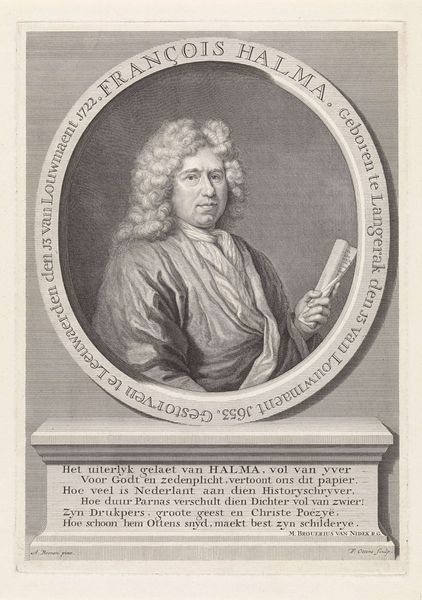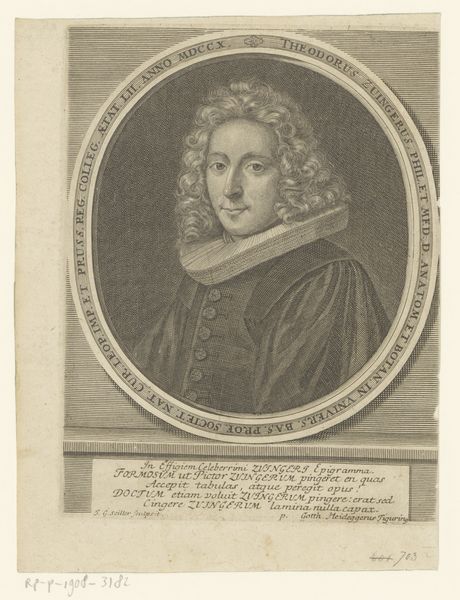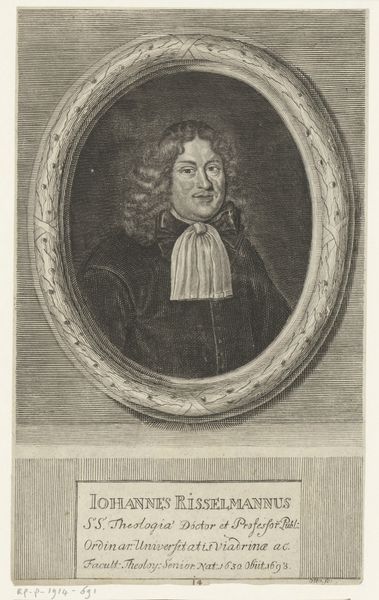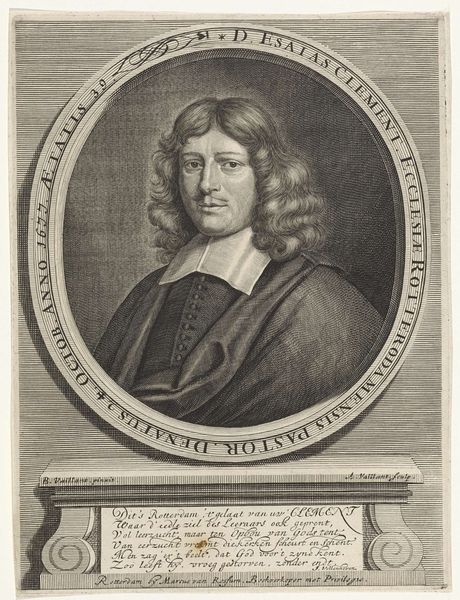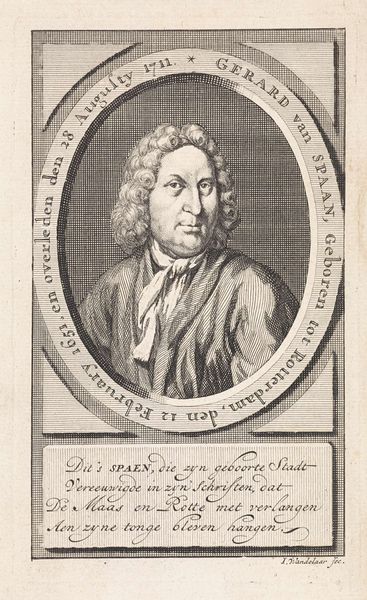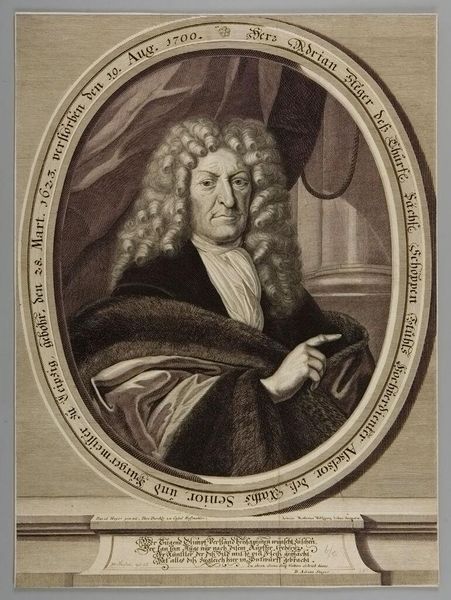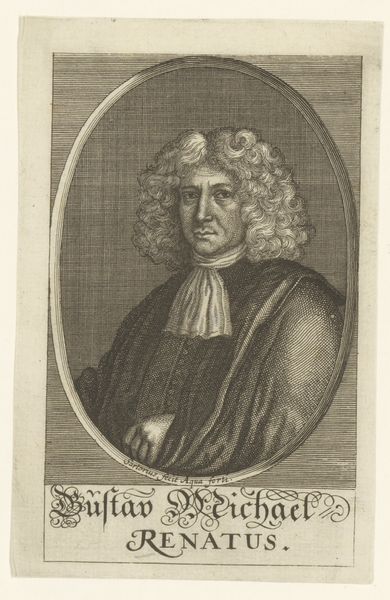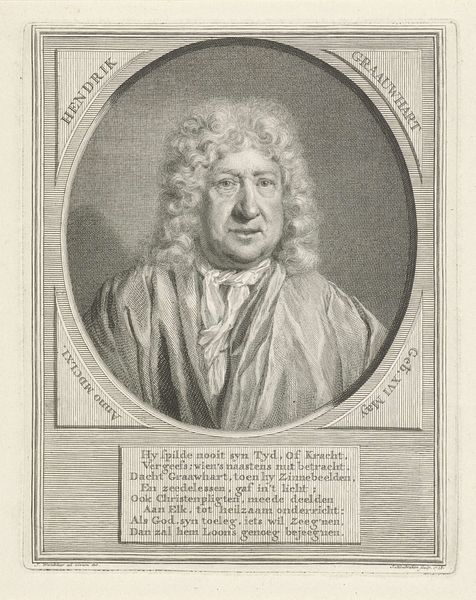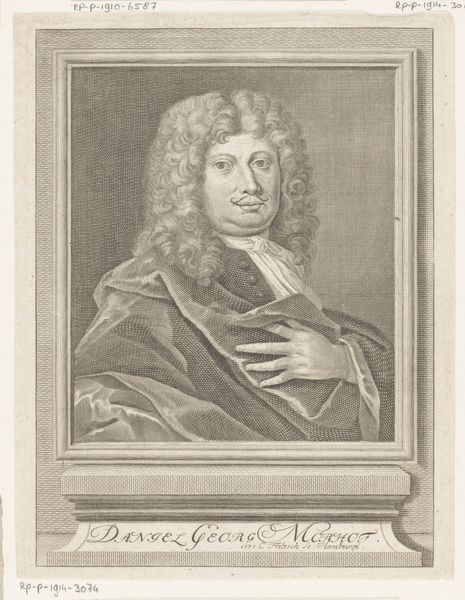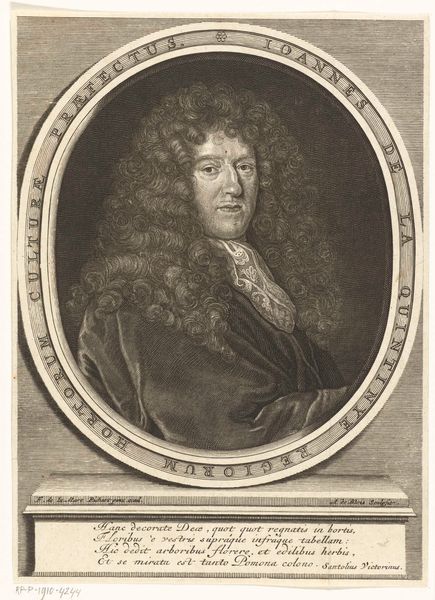
print, engraving
#
portrait
#
baroque
#
dutch-golden-age
# print
#
history-painting
#
engraving
Dimensions: height 139 mm, width 91 mm
Copyright: Rijks Museum: Open Domain
Curator: I find myself immediately drawn into this rather somber image. There is a weight, a gravity to the subject, almost philosophical, I would say. Editor: Indeed. What we’re looking at is a print, an engraving really, dating back to 1733. It’s entitled "Portret van Willem Sewel," created by Jan Caspar Philips and housed at the Rijksmuseum. It is very much in the Baroque style, while rooted in the Dutch Golden Age portraiture. Curator: Sewel’s gaze is particularly striking. The artist has captured a very knowing, almost challenging look, as though Sewel is keenly aware of his place in the historical narrative and actively questioning the viewer’s perception of him. His eyes seem to reflect centuries of shifting cultural values. Editor: Absolutely. Sewel was an important figure—a historian, lexicographer, translator and playwright who championed Quakerism, whose influence extended throughout Europe. The text beneath his image emphasizes his intellectual power. It highlights his sharp mind and erudition, a celebration of enlightenment ideals rendered in the symbolic language of his time. The Oval shape itself becomes a symbolic window into the intellectual soul of Sewel. Curator: The clothing also stands out. His draped robe carries classical undertones that speak to status but with its simplified lines eschews unnecessary ornamentation in favor of function, an understated quality in direct conversation with his ideals. One wonders, in which contexts would Sewel be presented? Editor: Notice the detail in the hair—the voluminous wig, composed of tightly controlled curls. I see an embodiment of the Baroque love of detail, yes, but more so I see how tightly constructed societal expectations are literally and metaphorically crowning him, pointing both to Sewel's individual status, but to the social conventions that elevated people like Sewel during this time. The act of framing him inside this ornamental structure further reinforces this sense of prescribed position. Curator: His positioning in relation to us carries implications that are more compelling when framed against evolving social and political contexts. Where does Sewel's representation challenge or uphold historical conventions and stereotypes in his portrayal? What expectations of identity are we bringing to it? Editor: A deeply resonant thought. Jan Caspar Philips uses familiar symbols to capture Sewel’s historical imprint in ways that reflect Sewel’s contemporary cultural status and speak to universal themes. Curator: It truly makes you think about how individuals are situated in history, how societal forces impact what is remembered about them.
Comments
No comments
Be the first to comment and join the conversation on the ultimate creative platform.
